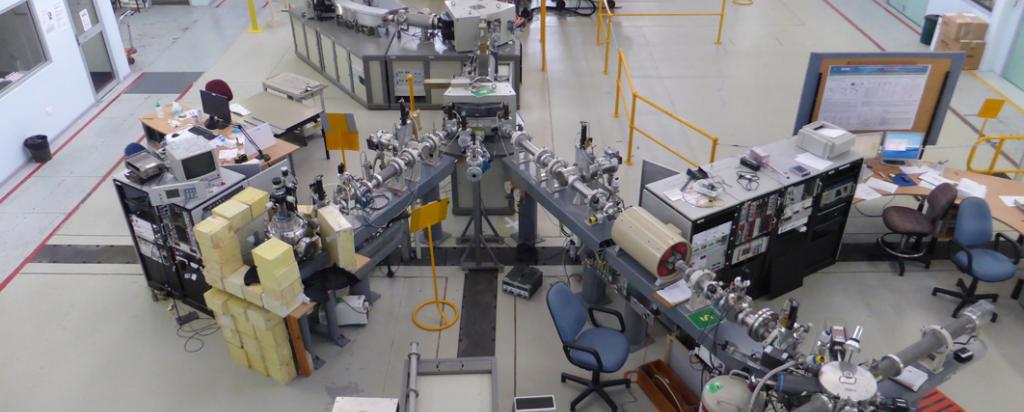
2MV STAR Tandem Accelerator
The 2MV tandetron accelerator, named STAR, can perform both IBA and AMS analyses. It has three ion sources which include two duoplasmatron sources, for hydrogen and helium, and a solid target sputter source used primarily for ionising carbon samples for AMS. The STAR accelerator currently has 3 beamlines, a multi-elemental surface analysis beamline (IBA), a high resolution depth profiling beamline (IBA), and a 14C beamline (AMS).
The 2MV Tandetron STAR accelerator can produce a wide range of light and medium weight ions, with energies from a few hundreds of keV to 4 MeV, and are used for a diverse range of activities in the fields of materials analysis, biological and environmental studies, as well as basic nuclear physics.
Accelerator science techniques can be applied to surface and bulk analysis of solid state materials, environmental pollution monitoring, archaeological artefact elemental determinations, studies of pigment composition in paintings, biological studies using tracer elements and studies of geological material. The STAR accelerator also has a dedicated AMS 14C beam line used for routine radio carbon measurements.
Facilities on STAR Accelerator include:
Broad beam IBA facility - Target chamber and data collection facility for simultaneous PIXE (proton-induced X-ray emission), PIGE (proton-induced gamma-ray emission) and RBS (Rutherford backscattering). Sample holders can take up to 60 samples in vacuum and measurement of samples is automated. Information on IBA analysis techniques can be found here.
Multi-Angle Detector Positioning System - XYZ Target Manipulator - UHV target chamber with charged particle detectors for depth profile measurements of light elements such as hydrogen, carbon and oxygen, using forward recoil and nuclear reaction techniques. These are used for measurement of water turnover in desert lizards using 18O as a biological tracer, depth profiling of ion implanted species in semiconductors.